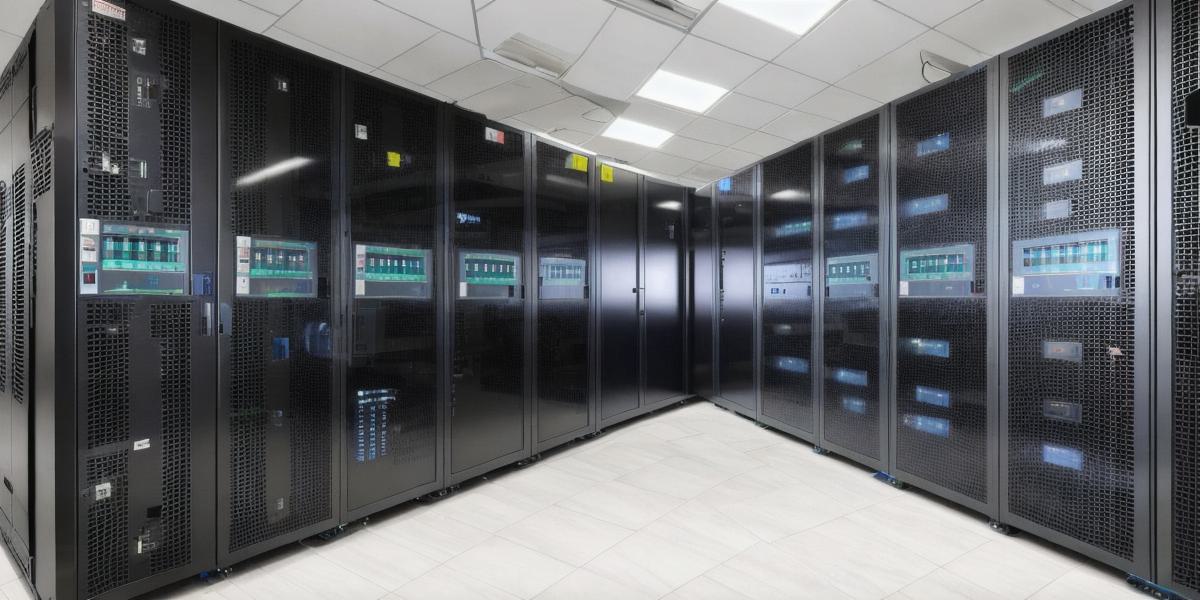When it comes to designing a robust and efficient data center network architecture, several essential components come into play. These elements work together seamlessly to ensure optimal data transmission and processing, minimal downtime, and superior network performance. In this text, we’ll explore the key building blocks that make up a well-structured data center network.
1. High-Speed Backbone
The foundation of any data center network lies in its backbone, which is responsible for transporting large volumes of data at high speeds between various parts of the infrastructure. A high-speed backbone typically consists of switches and routers that are interconnected using redundant, low-latency connections such as 10 Gigabit Ethernet or 40 Gigabit Ethernet.
**Example:**
Consider a data center with two interconnected buildings. Each building houses several racks of servers, switches, and routers. The high-speed backbone would consist of multiple switches and routers, interconnected via redundant 10 GbE or 40 GbE links to ensure swift and reliable data transfer between the buildings.
**2. Access Layers**
Access layers act as gateways for end devices in a data center network to connect with the rest of the infrastructure. They are typically made up of switches that provide numerous ports for connecting servers, storage devices, and other network elements. Access layers should be designed with redundancy and scalability in mind to accommodate future growth.
**Example:**
In a typical setup, access switches would be placed at the top and bottom of server racks, allowing servers to connect via copper or fiber cables. These access switches would be connected to the distribution layer switches via uplinks, ensuring seamless data transfer between servers and other network components.
**3. Distribution Layers**
Distribution layers act as intermediaries between access and core layers in a data center network. They are responsible for routing traffic between various access points (servers, storage devices) and the central spine of the network. These layers typically consist of high-capacity switches that handle both data forwarding and traffic aggregation.

**Example:**
In our example, distribution layer switches would be placed at the edges of the data center, connecting to multiple access switches via uplinks. They would then connect to core layer switches or routers using redundant links, ensuring efficient and reliable routing between different parts of the network.
**4. Core Layers**
Core layers form the heart of a data center network architecture, handling traffic aggregation and long-distance data transfer. These layers typically consist of high-performance switches or routers that can handle large amounts of traffic and provide low latency to ensure minimal delays in data transmission.
**Example:**
In our example, core layer switches or routers would be placed at the center of the network, interconnected via multiple redundant links to form a highly resilient backbone. They would handle traffic aggregation from distribution layers and distribute it to appropriate destinations within the data center or to external networks, ensuring seamless connectivity between various components.
**5. Security and Access Control**

Security and access control are critical components of any well-designed data center network architecture. These elements help protect against potential threats and unauthorized access while enabling secure communication between different parts of the infrastructure. Common security measures include firewalls, intrusion detection systems, and virtual private networks (VPNs).
**Example:**
In a production environment, security policies would be implemented at various points in the network to control traffic flow and enforce access controls. Firewalls would be placed at strategic locations to filter incoming and outgoing traffic based on predefined rules. Access to sensitive resources would be controlled via VPNs or two-factor authentication mechanisms to ensure secure communication channels and prevent unauthorized access.
In conclusion, a robust and efficient data center network architecture relies on several key components, including a high-speed backbone, access layers, distribution layers, core layers, and security and access control measures. By carefully designing these elements and ensuring their seamless integration, you can create a resilient, scalable, and secure infrastructure capable of supporting the demands of modern data-intensive applications.
